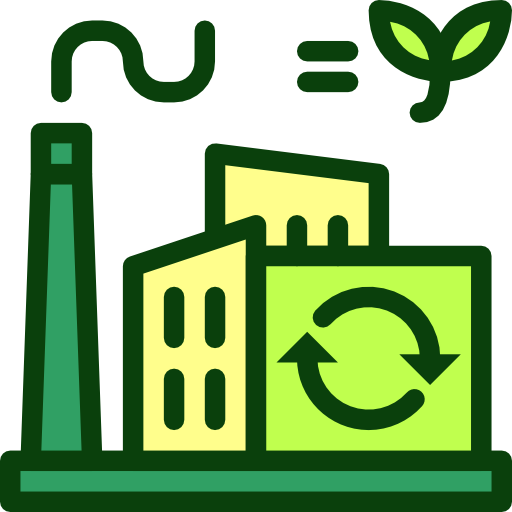United Arab Emirates - Geography

Here, let us take a look at the Geography of United Arab Emirates. Strategic location along southern approaches to Strait of Hormuz, a transit point for crude oil; Abu Zaby (Abu Dhabi) and Dubayy (Dubai) together account for over 90% of UAE's area and two-thirds of the population. Mother's mean age at first birth is (), whereas, the Maternal mortality ratio is 3 deaths/100,000 live births (2023 est.)
Geographical data of United Arab Emirates
| Location | Middle East, bordering the Gulf of Oman and the Persian Gulf, between Oman and Saudi Arabia |
|---|---|
| Geographic coordinates | 24 00 N, 54 00 E |
| Map references | Middle East |
| Tarrain | flat, barren coastal plain merging into rolling sand dunes of vast desert; mountains in east |
| Natural Resources | petroleum, natural gas |
| Natural Hazards | frequent sand and dust storms |
| Irrigated Land | 940 sq km (2022) |
| Major rivers (by length in km) | |
| Major aquifers | |
| Land Boundaries | 1,066 km |
| Border Countries | Oman 609 km; Saudi Arabia 457 km |
| Coastline | 1,318 km |
| Climate | desert; cooler in eastern mountains |
| Area | |
| Total Area | |
| Land Area | 83,600 sq km |
| Water Area | 0 sq km |
| comparative Area | slightly larger than South Carolina; slightly smaller than Maine |
| Maritime Claims | |
| Territorial sea | 12 nm |
| Contiguous zone | 24 nm |
| Exclusive economic zone | 200 nm |
| Continental shelf | 200 nm or to the edge of the continental margin |
| Elevations | |
| Highest point | Jabal Bil 'Ays 1,905 m |
| Lowest point | Persian Gulf 0 m |
| Mean elevation | 149 m |
| Land Use | |
| Agricultural land | 5.5% (2023 est.) |
| Agricultural land: arable land | arable land: 0.7% (2023 est.) |
| Agricultural land: permanent crops | permanent crops: 0.6% (2023 est.) |
| Agricultural land: permanent pasture | permanent pasture: 4.2% (2023 est.) |
| Forest | 4.6% (2023 est.) |
| Other | 89.7% (2023 est.) |
Population Distribution
Population is heavily concentrated to the northeast on the Musandam Peninsula; the three largest emirates -- Abu Dhabi, Dubai, and Sharjah -- are home to nearly 85% of the population
People and Society
In United Arab Emirates, the different Ethnic groups are such that we have: Emirati 11.6%, South Asian 59.4% (includes Indian 38.2%, Bangladeshi 9.5%, Pakistani 9.4%, other 2.3%), Egyptian 10.2%, Filipino 6.1%, other 12.8% (2015 est.)
| Population | |
|---|---|
| Pop growth rate | 0.6% (2024 est.) |
| Birth rate | 10.7 births/1,000 population (2024 est.) |
| Death rate | 1.7 deaths/1,000 population (2024 est.) |
| Health expenditure | |
| Physicians Density | |
| Hospital bed Density | 2 beds/1,000 population (2021 est.) |
| Total fertility rate | 1.61 children born/woman (2024 est.) |
| Gross reproduction rate | 0.78 (2024 est.) |
| Contraceptive prevalence rate | |
| Est married women (ages 15-49) | 72.4% (2023 est.) |
| Literacy | |
| Education expenditures | |
| Net Migration rate | -3.1 migrant(s)/1,000 population (2024 est.) |
| Nationality | Emirati | Emirati(s) |
| Languages | |
| Religions | Muslim 74.5% (official) (Sunni 63.3%, Shia 6.7%, other 4.4%), Christian 12.9%, Hindu 6.2%, Buddhist 3.2%, agnostic 1.3%, other 1.9% (2020 est.) |
| Age Structure | |
| 0-14 years | 16.4% (male 842,577/female 802,302) |
| 15-64 years | 81.4% (male 5,812,470/female 2,353,750) |
| 65 years and over | 2.2% (2024 est.) (male 169,084/female 52,030) |
| Dependency Ratios | |
| Total dependency ratio | 22.9 (2024 est.) |
| Youth dependency ratio | 20.1 (2024 est.) |
| Elderly dependency ratio | 2.7 (2024 est.) |
| Potential support ratio | 36.9 (2024 est.) |
| Median Age | |
| Total | 35.8 years (2024 est.) |
| Male | 38.1 years |
| Female | 29.8 years |
| Urbanization | |
| Urban population | 87.8% of total population (2023) |
| Rate of urbanization | 1.5% annual rate of change (2020-25 est.) |
| Major urban areas (Pop) | 3.008 million Dubai, 1.831 million Sharjah, 1.567 million ABU DHABI (capital) (2023). |
| Sex Ratio | |
| At birth | 1.06 male(s)/female |
| 0-14 years | 1.05 male(s)/female |
| 15-64 years | 2.47 male(s)/female |
| 65 years and over | 3.25 male(s)/female |
| Total population | 2.13 male(s)/female (2024 est.) |
| Infant Motality | |
| Total | 5 deaths/1,000 live births (2024 est.) |
| Male | 5.5 deaths/1,000 live births |
| Female | 4.4 deaths/1,000 live births |
| Life Expectancy at birth | |
| Total population | 79.9 years (2024 est.) |
| Male | 78.6 years |
| Female | 81.4 years |
| Drinking Water Sources | |
| Improved: urban | urban: 100% of population (2022 est.) |
| Improved: rural | rural: 100% of population (2022 est.) |
| Improved: total | total: 100% of population (2022 est.) |
| Unimproved: urban | urban: 0% of population (2022 est.) |
| Unimproved: rural | rural: 0% of population (2022 est.) |
| Unimproved: total | total: 0% of population (2022 est.) |
| Sanitation facility acess | |
| Improved: urban | urban: 99.8% of population (2022 est.) |
| Improved: rural | rural: 99.9% of population (2022 est.) |
| Improved: total | total: 99.8% of population (2022 est.) |
| Unimproved: urban | urban: 0.2% of population (2022 est.) |
| Unimproved: rural | rural: 0.1% of population (2022 est.) |
| Unimproved: total | total: 0.2% of population (2022 est.) |
| Alcohol consumption per capita | |
| Total | 2.03 liters of pure alcohol (2019 est.) |
| Beer | 0.21 liters of pure alcohol (2019 est.) |
| Wine | 0.14 liters of pure alcohol (2019 est.) |
| Spirits | 1.65 liters of pure alcohol (2019 est.) |
| Other alcohols | 0.02 liters of pure alcohol (2019 est.) |
| Tobacco use | |
| Total | 10.7% (2025 est.) |
| Male | 13.9% (2025 est.) |
| Female | 2.4% (2025 est.) |
Demographic profile
All Important Facts about United Arab Emirates
Want to know more about United Arab Emirates? Check all different factbooks for United Arab Emirates below.
-
 United Arab Emirates Factbook
United Arab Emirates Factbook
-
 The Economy of United Arab Emirates
The Economy of United Arab Emirates
-
 Learn about the Government of United Arab Emirates
Learn about the Government of United Arab Emirates
-
 Communication in United Arab Emirates
Communication in United Arab Emirates
-
 Popular Universities in United Arab Emirates
Popular Universities in United Arab Emirates
-
 Enerny in United Arab Emirates
Enerny in United Arab Emirates
-
 Transport in United Arab Emirates
Transport in United Arab Emirates
-
 The Geography and society of United Arab Emirates
The Geography and society of United Arab Emirates
-
 The Environment of United Arab Emirates
The Environment of United Arab Emirates
-
 Military and security in United Arab Emirates
Military and security in United Arab Emirates